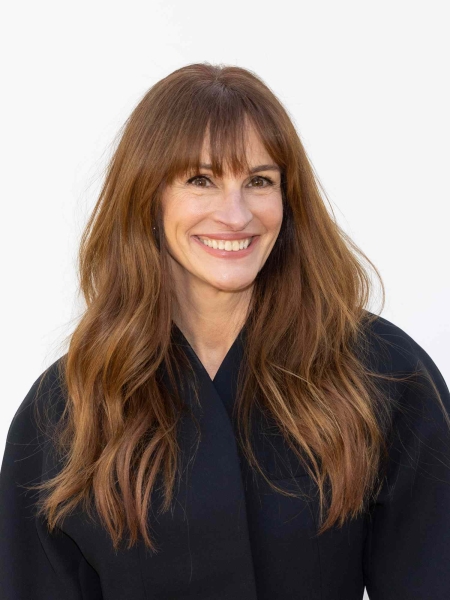Contents
Plus, the common mistakes you'll want to avoid.

Few parts of the body show fatigue like our eyes do. Wrinkles, bags, and dark shadows emerge with too little sleep, too much stress, and too many birthdays. “Because the skin is so thin here, it can swell, stretch, and become lax very easily,” says Dr. Alexis Young, an assistant clinical professor of dermatology at Columbia University Medical Center in New York City. “Over time, the area loses collagen, elastin, and fat, leading to hollowing, dark circles, and fine lines.”
The good news is that a little concealer can go a long way towards offsetting these issues, leaving your eyes looking awake and refreshed. “Concealers have color-correcting, brightening, and moisturizing benefits to specifically address these concerns,” says celebrity makeup artist Suzy Gerstein. “The key is choosing the right one and nailing the application steps.”
Ahead, top makeup pros share their tips on how to do just that.
Pick Your Perfect Formula
The type of concealer you choose—whether that be a stick, liquid, or cream—is a matter of personal preference. Gerstein favors pigmented liquid concealers with moisturizing and brightening properties, as she feels they lay best under the eyes and look the most skin-like. Bobbi Brown, founder of Jones Road, recommends a cream-based formula: “I find they’re easier to control, they blend well, plus they’re buildable, so you can continue to add more coverage throughout the day if needed,” she notes. Celebrity makeup artist and Maybelline New York Brand Ambassador Jenna Kristina likes sticks for full coverage, liquids for versatility, and creams for their blendability.
As for finishes, “If you have normal to dry skin, a radiant finish concealer is a great option for keeping the under-eye area hydrated, preventing the formula from settling into fine lines. For oily or blemish-prone skin, I like a mattifying formula with full coverage and long wearability to keep excess shine at bay. Mature skin with visible signs of aging favors a buildable hydrating formula,” says Tisha Thompson, founder and CEO of LYS Beauty.
Select Your Ideal Shade

Experts recommend choosing a concealer one or two shades lighter than your natural complexion. “It should match your skin’s undertone,” says Kristina. “If you’re fair-skinned, look for a pink or neutral undertone. If you’re medium-toned, choose a warm or neutral undertone. If you’re olive or darker complexions, opt for golden or an olive undertone.”
Cleanse, Hydrate, De-Puff
It’s important to apply under-eye concealer to clean skin in order to create a foundation for the concealer to adhere to. “I recommend a gentle, noncomedogenic hydrating cleanser to prevent irritation and dryness,” says Dr. Young. For long-lasting concealer coverage, add moisture to the under-eye area with creams like Alpyn Beauty Instant Bright Eye and Catrice Under Eye Brightener or a serum like BL+ Eye Serum. “Prior to the concealer application, I recommend using an ice-roller to de-puff any under-eye bags,” adds Thompson.
Prep the Area
Concealer can be worn alone or layered with other makeup products. “Foundation, tinted moisturizer, and CC or BB creams can be applied before or after concealer, based on your desired coverage,” says Kristina. But for minimal makeup days, a concealer will perform well when applied directly to the skin. If you suffer from prominent veins or excessive darkness under the eye, consider prepping with a color-correcting product — such as The Neutralizer Pencil — to even out the area before applying concealer. “Using your fingertips or a brush, tap the color corrector onto your skin with gentle dabbing motions,” says Brown. “The goal is to diffuse the color and ensure it seamlessly integrates into your skin.”
“I use a pink-tone color corrector on very fair skin, salmon on light skin, peach on medium skin, orange on dark skin, and red on deep skin in the areas where there’s the most shadowing, usually around the inner corners of the eyes,” says Gerstein. Alternatively, you can choose a concealer that has a built-in color corrector, like Kulfi Main Match Crease-Proof Concealer and Makeup by Mario Surrealskin Awakening Concealer.
Apply the Concealer
Don’t be afraid to apply concealer to the entire under-eye area. “I put it everywhere, even up close to the lashes,” says Brown. “Focus on the inner eye first, as that’s the area where there’s the most darkness, then apply the concealer all the way to the outer corner of the eye, staying right under the lash line where there can be a lot of redness. If you isolate the concealer to just the inner and outer corners of the eye, you’re not evening out the discoloration, which is the whole reason for using a concealer.”
Most experts suggest building coverage gradually by applying a few thin layers and allowing each layer to dry prior to adding more product. “This prevents caking and ensures a more natural finish,” says Brown. For under-eye bags, “Use a thicker concealer placed strategically at the bottom of the bag to brighten and lift the area, avoiding direct application onto the bag which can accentuate puffiness,” Kristina says. As for concaving, “Concealer can fill in slight hallowing under the eyes, adding volume and brightness,” Kristina notes. “Apply a skin-matching concealer directly to the concaved area, then blend outward for a smoother, more even look.” If you have under-eye darkness, apply a yellow or orange concealer like Maybelline Cover Stick Corrector Concealer to help cancel out those colors. If it’s more about redness under your eyes, a green color-correcting concealer like NYX Professional Makeup Pro Fix Stick Correcting Concealer will help neutralize that region.
Set the Concealer

Applying powder as the final step will help set your concealer and provide crease resistance and control shine. Depending on your preference and desired finish, you can use either a pressed powder, like Charlotte Tilbury Mini Airbrush Flawless Finish Setting Powder or Quiet on Set Setting Powder, or a loose powder, such as Dior Forever Cushion Powder. Pressed powder is convenient for on-the-go touch-ups, offering a natural finish, while loose powder provides a lightweight, matte finish and is ideal for baking (when a generous amount of loose powder is applied to the under-eye area for 10 to 15 minutes before the excess powder is swept away with a fluffy brush).
Setting powders can be translucent or have a slight color to them. “When in doubt, a translucent or skin-toned powder will always work,” says Thompson. “However, you want the powder to be slightly lighter than your complexion to allow for the concealer’s brightening effect.” For a seamless and long-lasting finish, gently press the powder onto the concealer using a brush or sponge. “Never rub, so as to not disturb the concealer,” says Gerstein. Apply the powder immediately following the concealer application. “You want to prevent the concealer from drying down,” adds Thompson.
Mistakes to Avoid
Fall victim to any of these no-nos, and there’s a good chance you won’t get the coverage you want out of your concealer.
- No prep: Not applying a moisturizer or properly hydrating the under-eye area will increase the chances of your concealer looking cakey.
- No blending: To yield the most natural results, be sure to completely blend the product to prevent the area from looking patchy.
- No setting: Setting is an important step to keeping a concealer in place. “Find which setting method works best for you, whether it’s a light-powder dusting or full-fledged baking,” says Thompson.
Frequently Asked Questions
- What’s the best tool for blending concealer?
Concealer can be blended with any makeup applicator, including your fingers. “However, beauty sponges tend to offer a more natural, lighter coverage, while brushes yield a fuller coverage,” Thompson says.
- Can I use concealer as an eyeshadow primer?
Concealer will create a smooth, even base for eyeshadow to adhere to, Kristina says. However, it’s important to set the concealer with a powder prior to applying eyeshadow in order to maximize its effect. “In this case, avoid extra emollient concealers and remember [that] a little goes a long way,” advises Gerstein.

